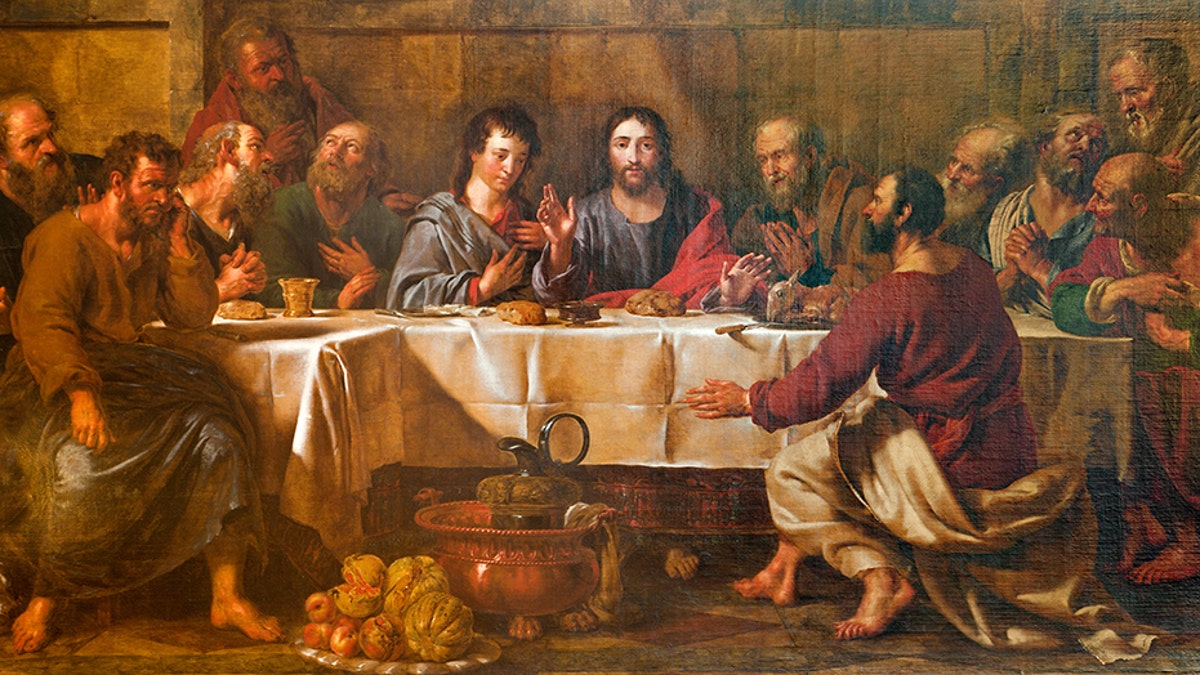
The Last Supper. (iStock)
For Christians as well as Jews, Passover – beginning at sundown Friday and ending at sundown on April 7 – is a particularly important holiday.
You say that Christians don’t celebrate Passover? But of course we do. Easter is Passover.
Most modern languages bear witness to this and use similar words to describe both the Jewish and Christian holidays. The words are taken from Pesach, the Hebrew name for Passover. Spaniards call Easter Pascua. Italians call it Pasqua. And the Dutch say Pasen. In Zulu it’s IPhasika.
Only a few languages – English, German, Polish – give the Christian holiday a name unrelated to Passover. We call it “Easter,” though it loses much in that translation.
In ancient Israel, Passover was a sacrificial feast of massive proportions. The first century historian Josephus tells of one year when 255,660 lambs were slaughtered in the Jerusalem Temple. Other sources tell us that the city’s streams ran red with blood from the sacrifices.
It was a holy day of obligation. The Book of Exodus (23:14–17) required all Israelite males to celebrate three feasts in the holy city, and Passover was chief among the three. At Passover a family would share a meal tightly scripted with prayer, known as the seder. They’d share the sacrificial lamb along with unleavened bread and four cups of wine.
Jesus’ Last Supper had a Passover setting and character, and so it was a solemn, sacrificial banquet. But his offering was not an ordinary lamb. It was rather the person made known in the Gospels as the “Lamb of God.” It was Jesus himself.
In the Upper Room, Jesus made an offering of his “body” and “blood.” He spoke of the action as his memorial (another synonym for sacrifice). Echoing the Passover Haggadah (the prayer book and guide used to conduct the seder, still used today) he told those who attended to repeat the action they had witnessed.
The sacrifice offered at the Last Supper was consummated on the cross. The sacrifice that took place “once for all” was extended to all peoples by its re-presentation in the meal that Christians call the “Lord’s Supper” or “Eucharist.” In his First Letter to the Corinthians, Saint Paul called Christ “our paschal lamb” who “has been sacrificed” (5:7).
It was Jesus’ action at the Last Supper that transformed his death from an execution to a sacrificial offering. At the Last Supper he gave his body to be broken, his blood to be poured out on the “altar” of the cross.
Because he did so, his death on Calvary was not simply a brutal and bloody execution. Jesus’ death had been transformed by his self-offering in the Upper Room. It had become the offering of an unblemished Passover victim – the self-offering of a high priest who gave himself as a victim for the redemption of others. “Christ loved us and gave himself up for us, a fragrant offering and sacrifice to God” (Ephesians 5:2).
Christians came to understand this event – Jesus’ suffering, death, and resurrection — as the Paschal Mystery. It is the mystery of Passover, foreshadowed from the dawn of creation by the blood of Abel, the murdered shepherd. It is the mystery of Passover, prefigured by Abraham’s offering of his son Isaac on Mount Moriah. It is the mystery hidden in Israel’s deliverance amid the final plague visited upon Egypt.
All of these mysteries found fulfillment in Jesus’ Passover, which the early Christians understood as a “once for all” sacrifice (Hebrews 7:27, 10:10).
It was a supremely important event. As Jews renewed their covenant through the Passover sacrifice, so Christians renewed their “new covenant” through the offering of the body and blood of the Lamb of God. They marked every Sunday as the Lord’s Day by re-presenting the once-for-all sacrifice. And Passover – Pesach – was the first feast the Christian Church celebrated annually.
We still celebrate Passover every year. In our country we might call it by a different name, but the reality remains the same as it ever was. Don’t let it pass you by without a keen awareness of its deepest meaning.




















